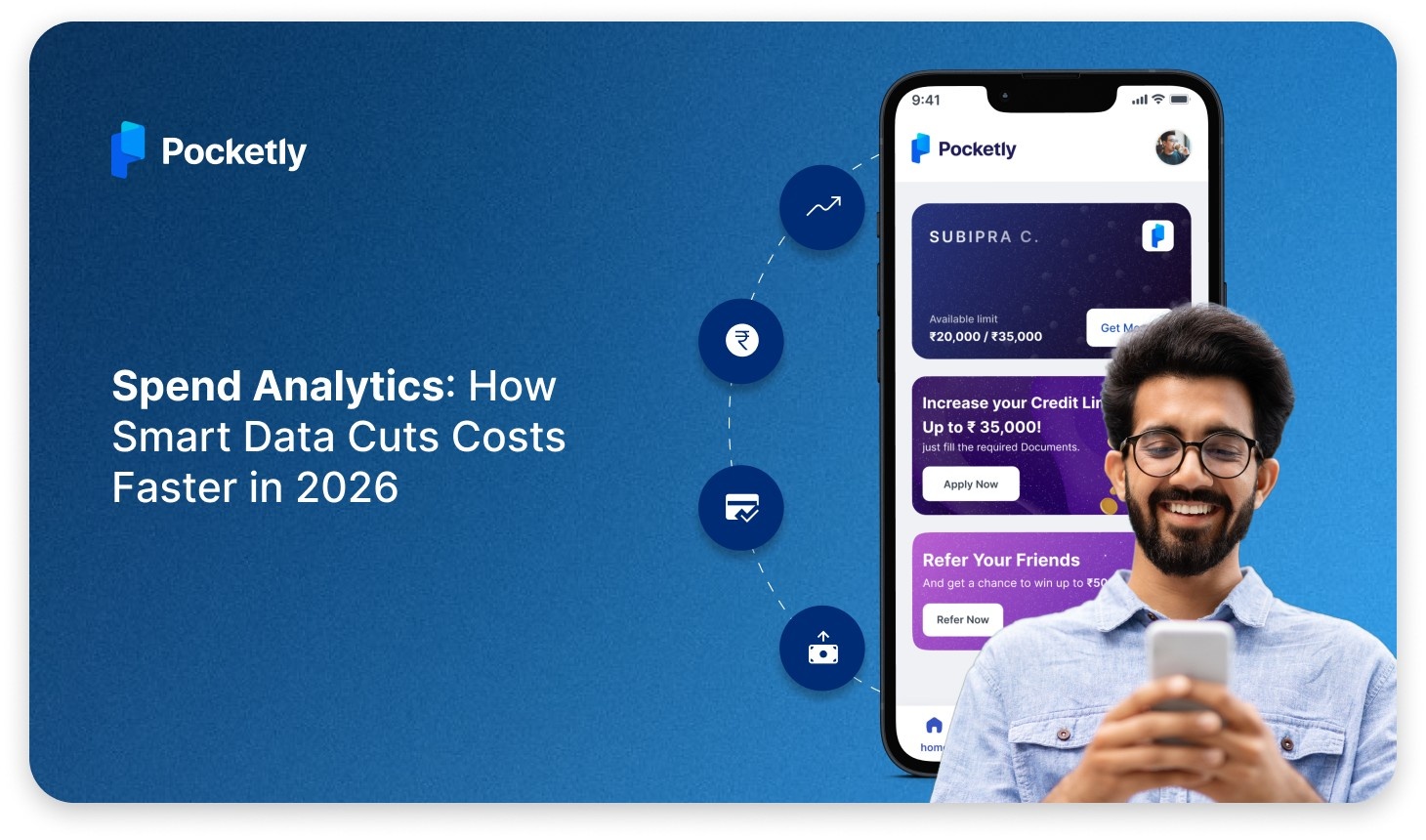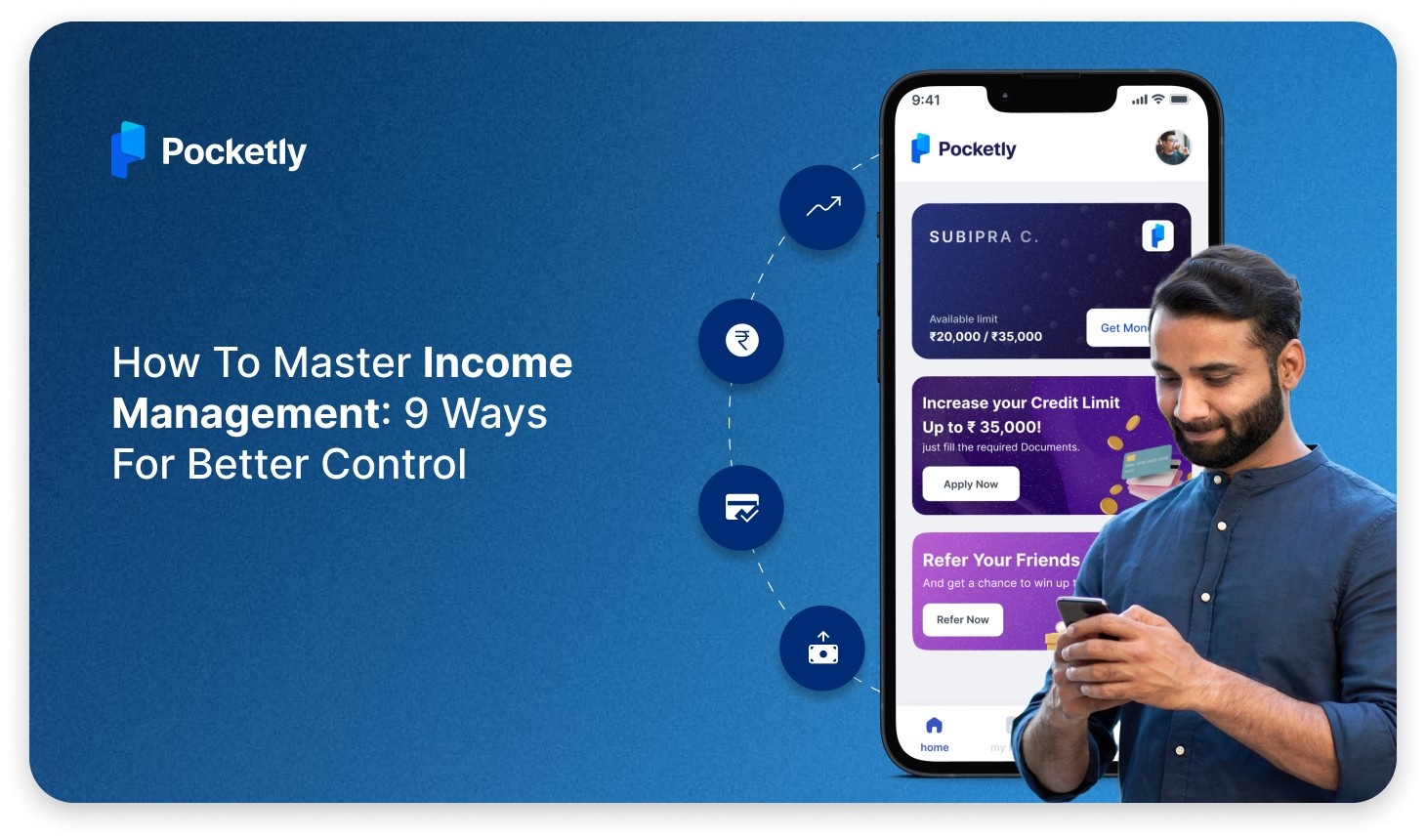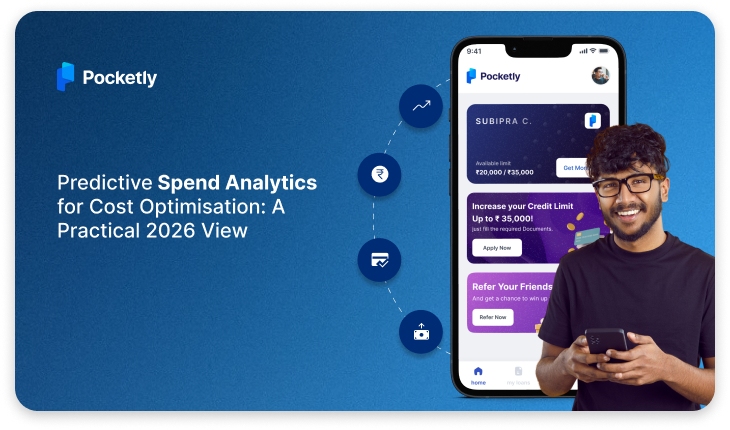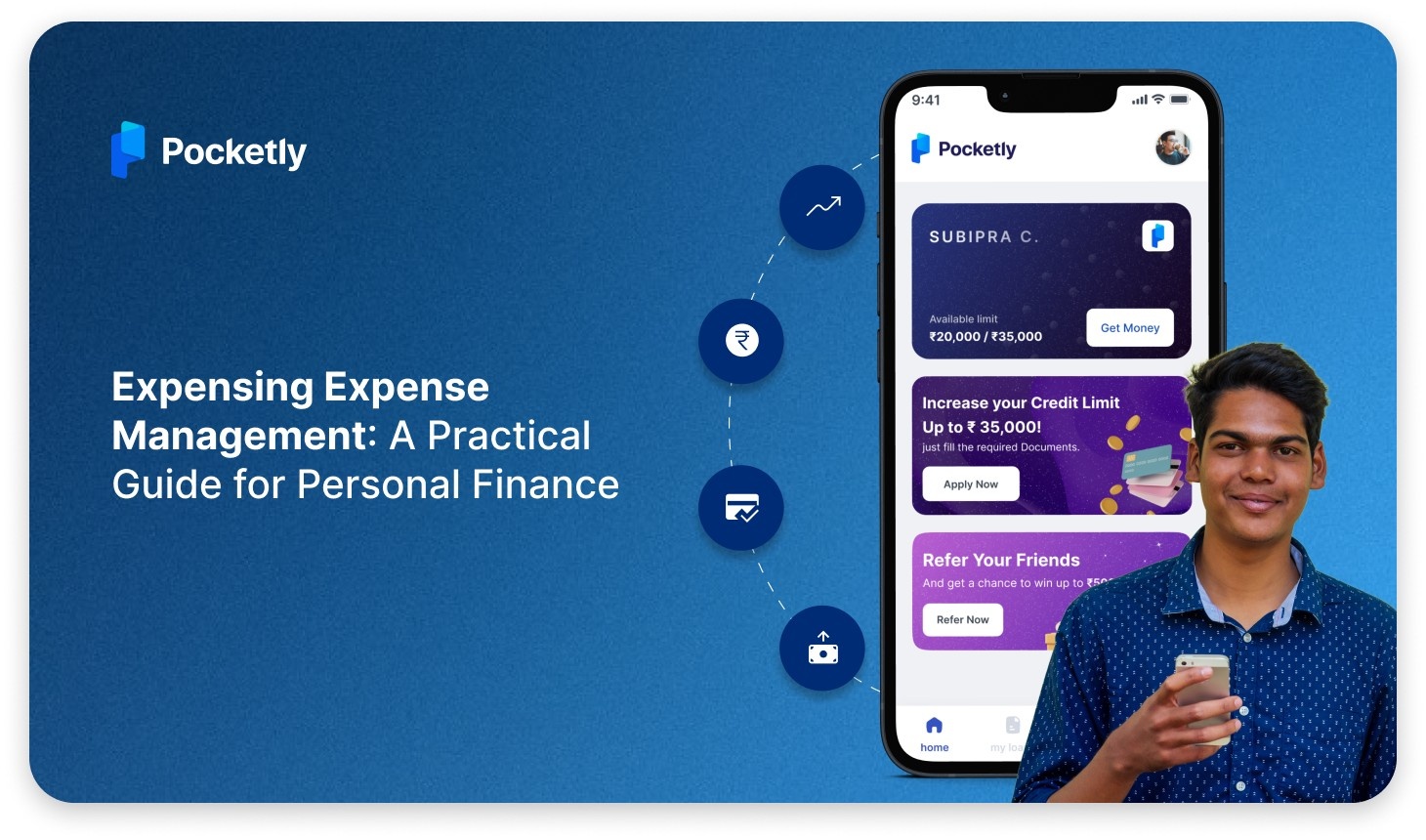
Taking a loan, be it for your new car, home, education, or business, is often a necessary step toward achieving big goals. But what many borrowers don’t fully realise is that the real challenge begins after the loan is approved: the repayment.
And that’s where your knowledge of the loan repayment schedule becomes your secret weapon.
It’s more than just a table of dates and numbers. It’s a roadmap showing exactly how your loan will be paid off, month by month, year by year. It tells you how much you’re paying in interest, how much of your EMI (Equated Monthly Instalment) reduces your loan amount, and how long it will take before you’re debt-free.
Yet, despite its importance, most people either don’t check their repayment schedule or try to understand what it means. And that can lead to financial blind spots, like missing prepayment opportunities, underestimating your total interest cost, or being caught off guard by payment deadlines.
In this article, we’ll look at:
- What a loan repayment schedule really includes
- Why it's crucial for financial planning
- How to read and calculate one on your own
By the end of this article, you’ll see how understanding your loan schedule isn’t just a smart choice, but a key to managing your finances.
What Is a Loan Repayment Schedule?
A loan repayment schedule is like a detailed blueprint of how your loan will be paid off over time. It breaks down each EMI (Equated Monthly Installment) into two parts: the portion that goes toward the loan’s interest, and the portion that pays off the principal (the actual amount you borrowed).
Most borrowers assume that every EMI equally chips away at the loan balance, but that’s not how it works. In the early months, a larger chunk of your EMI goes toward interest. As time passes, the balance shifts, and more of your money starts paying off the principal. The schedule shows this shift, month by month, with crystal clarity.
But beyond just numbers, this schedule is a powerful tool for financial planning. Here’s how it helps you:
- Know Your Monthly Commitments: It tells you exactly how much you need to pay each month, so you can budget beforehand without surprises.
- Track Your Progress: Seeing how your outstanding loan balance reduces over time keeps you motivated and aware of how far you’ve come.
- Plan Prepayments Smartly: Understanding when the interest portion is highest can help you decide the best time to make extra payments and save on interest.
- Avoid Last-Minute Stress: Knowing your repayment timeline ensures you never miss a due date or get hit with penalties.
To understand the schedule fully, let’s look at the moving parts that make up each instalment and how they’re laid out.
Components of a Loan Repayment Schedule
Every repayment schedule is built on a few key elements that decide how much you pay, when you pay, and how long it takes to clear the loan. Here's what shapes the full picture:
- Principal Amount: The total sum of money you borrow from the lender. This is the original loan amount you need to repay.
- Example: If you take a home loan of ₹5,00,000, that ₹5,00,000 is your principal amount, the money you must pay back to the lender.
- Interest Rate: This is the extra charge for borrowing money, expressed as a percentage. It can vary based on the market and the lender.
- Example: If the interest rate is 10% per annum, it means you pay 10% of the outstanding principal as interest every year. So, on ₹5,00,000, the yearly interest would be ₹50,000 (10% of ₹5,00,000).
- EMI (Equated Monthly Instalment): A fixed monthly payment that includes both the principal and interest. This makes repayments manageable by spreading them out.
- Example: For a ₹5,00,000 loan at 10% interest for 5 years, your EMI might be around ₹10,600 each month.
- Repayment Tenure: This is the time period over which you will repay the loan. It can range from a few months to many years.
- Example: If you choose a 5-year tenure, you will make those ₹10,600 payments every month for 60 months.
- Amortization Schedule: This is the detailed plan showing how each EMI is split between paying interest and principal, and how the loan balance reduces over time.
- Example:
- In your first EMI, a larger portion, say ₹4,200, goes to interest, and ₹6,400 reduces the principal.
- By the 12th EMI, the interest portion drops, and more money goes toward the principal.
Also Read: Understanding FOIR: Calculation and Its Impact on Banking
It might sound complex, but calculating your repayment schedule is actually pretty straightforward. Here’s how it works in real terms.
How to Calculate Loan Repayment Schedule (With Example)
For example, you’ve taken a loan of ₹1,00,000 to renovate your home. The lender has offered you an interest rate of 12% annually, which breaks down to 1% monthly interest. You’ve agreed to repay this loan over a period of one year, meaning you’ll be making monthly payments for 12 months. This setup will help us walk through exactly how your loan repayment schedule works in practice.
Step 1: Calculate the EMI
Before anything else, you need to know your fixed monthly outgo, your EMI. This monthly payment includes both the interest charged and a part of the principal you're repaying. Calculating this accurately ensures you know what your total monthly liability looks like and helps plan your cash flow.
For this example:
- P = ₹1,00,000 (principal)
- R = 1% = 0.01 (monthly interest rate)
- N = 12 months (loan tenure)
Using the standard EMI formula:
EMI = P R (1+R)12/(1+R)12-1
Plugging in these values,
EMI=1000000.01(1.01)12/(1.01)12-18885
So, the borrower will pay ₹8,885 per month.
Step 2: Breakdown of Principal and Interest for Month 1
The first month is where the interest portion of your EMI is at its highest, since it’s calculated on the full principal. Over time, this gradually reduces. This structure is key to understanding how reducing balance interest loans work.
- Interest is calculated on the full ₹1,00,000:
- ₹1,00,000 × 1% = ₹1,000
- Principal Repaid = ₹8,885 - ₹1,000 = ₹7,885
- Remaining Principal = ₹1,00,000 - ₹7,885 = ₹92,115
By the end of Month 1, your loan balance has reduced by ₹7,885.
Step 3: Breakdown for Month 2
In the second month, since the principal has reduced, the interest charged is lower. This is where you start noticing how more of your EMI begins going toward the principal each month. This monthly shift continues throughout the repayment tenure.
- Interest on ₹92,115 = ₹921.15
- Principal Repaid = ₹8,885 - ₹921.15 = ₹7,963.85
- Remaining Principal = ₹92,115 - ₹7,963.85 = ₹84,151.15
So, in Month 2, you’re repaying slightly more principal than before, and less in interest.
Step 4: What Happens Next
This pattern continues across all 12 months. The interest portion keeps reducing with each EMI because the principal it’s calculated on is going down. In parallel, the share of your EMI that goes toward repaying the principal keeps increasing.
In the last few months, most of your EMI will significantly reduce your loan balance, and only a tiny portion will go toward interest. That’s why understanding this structure isn’t just helpful, it’s essential if you're considering making prepayments or choosing between different loan offers.
Also Read: Exploring Different Types of Loan Repayment Methods
The repayment schedule is not just a set of principles or formulas; it has real financial advantages.
Benefits of Adhering to a Loan Repayment Schedule
A repayment schedule isn’t just about when you pay; it’s about how consistently you show up financially. And that consistency? It brings real, lasting advantages.
1. Builds a Strong Credit Profile
Every timely EMI you pay adds a positive mark to your credit history. Over time, this consistent behaviour reflects in your credit score, often determining whether you get approved for future loans or not. Lenders interpret a disciplined repayment record as a sign that you can handle credit responsibly, which can unlock better loan terms, including lower interest rates and larger loan amounts.
In essence, your repayment track record becomes your financial reputation, and lenders rely on it heavily to assess your risk level.
2. Improves Future Loan Eligibility
Financial institutions will likely see you as a low-risk borrower when your repayment schedule is clean and consistent. That translates into faster approvals and access to pre-approved offers. Whether it’s a top-up on an existing loan, a car loan, or a new credit card, your repayment behaviour becomes a decisive factor.
Some lenders even reward consistent repayment with loyalty-based benefits like processing fee waivers or rate discounts on future borrowings.
3. Helps You Close Loans Faster
When you stick to the schedule or make occasional prepayments, you reduce the overall loan tenure. This doesn't just shorten the debt cycle; it reduces the total interest paid over the loan’s life. That extra cash you free up by ending your loan early can then be redirected into savings, investments, or even new goals like funding a business or buying a property.
It’s not just about ticking boxes, it’s about unlocking financial bandwidth for what’s next.
4. Makes You Emergency-Ready
In times of sudden need, say a medical emergency or urgent home repair, your clean repayment record can make a crucial difference. Lenders often prioritise applicants with a good credit track record when approving urgent or unsecured loans. Because you’ve proven your reliability, you’re less likely to face delays or rejections when time and access to funds are critical.
Building up that kind of financial trust gives you an edge during unpredictable moments.
5. Reduces Financial and Mental Stress
Debt not only affects your bank balance, it has a psychological weight too. Unmanaged or delayed repayments can lead to penalties, overdue notices, and constant worry. But when you follow a clear schedule, it brings a sense of control. You know exactly what’s due and when; that predictability creates mental breathing space.
This sense of stability reduces money-related anxiety and prevents debt from snowballing into a long-term burden.
6. Strengthens Your Debt-to-Income Ratio
Your debt-to-income (DTI) ratio is one of the key metrics lenders check when you apply for new credit. You automatically improve this ratio by making timely repayments and lowering your outstanding balances. A lower DTI suggests that your income is sufficient to handle your existing debt, which gives lenders confidence in your ability to manage additional credit, whether it’s a mortgage or a business expansion loan.
It's a sign that you're not over-leveraged, and it can even decide between approval and rejection.
Once you see the advantages of staying on track with your payments, committing to the schedule is easier. But there’s still one area where confusion often creeps in, how is a repayment schedule different from an amortization table?
Comparison of Amortization Table and Repayment Schedule
Both sound similar, right? But there's a key difference in how they present repayment data. Here’s a quick comparison for a better view:
| Aspect | Amortization Table | Loan Repayment Schedule |
|---|---|---|
| Definition | A detailed breakdown showing how each EMI is split between interest and principal. | A broader overview of the loan repayment timeline, including EMIs and due dates. |
| Focus | Primarily focuses on financial components, principal, interest, and balance. | Focuses on payment structure, dates, EMI amount, and outstanding balance. |
| Format | Tabular format with monthly or periodic entries showing exact breakdowns. | Tabular or schedule format with emphasis on timing and total obligations. |
| Purpose | Helps understand how interest and principal change over time. | Helps track upcoming payments and manage cash flow. |
| Useful For | Loan analysis, prepayment planning, and calculating interest savings. | Budgeting, due date reminders, and managing financial commitments. |
| Who Provides It? | Often generated automatically by banks or financial software. | Typically shared by the lender at the time of loan approval or accessible via portals. |
| Updates Over Time? | Generally fixed unless prepayments are made. | Can be updated with new due dates, part-payments, or rescheduling. |
Knowing the differences between these tools is useful, but the real key is how you are managing your loan effectively. Here are practical tips to help you meet your repayment deadlines without stress.
Tips for Timely Loan Repayment
Sticking to your loan repayment schedule can sometimes feel challenging, but with a few smart strategies. Here are some tips to help you stay on track and make your repayments consistently on time:
- Set up automated payments through your bank or lender to avoid missing due dates.
- Maintain a dedicated savings or current account exclusively for your loan repayments.
- Include your EMI as a fixed expense in your monthly budget to ensure funds are allocated.
- Use calendar reminders or financial apps to get notified before your EMI due dates.
- Contact your lender proactively if you expect difficulty in making a payment to explore flexible options.
- Avoid taking on multiple loans or excessive debt that can strain your repayment capacity.
- Make prepayments whenever possible to reduce your outstanding principal and interest burden.
Now you have everything: the tips and the knowledge of timely repayment, but when you can plan ahead with Pocketly, then why wait?
How Pocketly Fills the Gap Between Big Loans and Sudden Needs
Taking out a long-term loan is a major financial commitment, and once it’s done, most people feel like their plate is already full. You're managing hefty EMIs, possibly for years, and there's this belief that once you're in debt, there’s no room to seek help again.
So when an emergency hits, a medical bill, urgent travel, a broken laptop, or even an unexpected opportunity, you hesitate. You think, “I already have a loan. Who’s going to give me another one?” And honestly, most traditional lenders won’t. Not for ₹1,000 or ₹5,000. Not without paperwork, credit checks, or delays.
This is exactly where Pocketly steps in, not as a replacement for your long-term loans, but as a relief hatch for moments that can’t wait.
What Is Pocketly?
Pocketly is a digital lending platform designed for young Indians who may not always have access to traditional loans but need fast, short-term credit. Whether you’re a student, a salaried employee, or a freelancer with existing EMIs, Pocketly helps you borrow small amounts instantly, with no awkward explanations and no heavy processes.
Why Pocketly Makes Sense When You’re Already Managing a Big Loan
- You don’t need to re-negotiate your existing loan: You don’t have to mess with your home loan, car loan, or other EMIs. Pocketly works independently, giving you breathing room without affecting your major commitments.
- Small loans, big impact: Sometimes all you need is ₹1,000 to fix your phone or ₹5,000 to pay a bill before payday. Pocketly lets you borrow amounts as low as ₹1000, so you’re not forced to take on more than you need.
- When time matters, speed wins: No one has time to wait in queues or fill out paperwork when the rent is due tomorrow. Pocketly processes and disburses loans in minutes, all through a mobile app.
Key Features of Pocketly:
- Instant Disbursal: Get money in your account within minutes after approval
- Loan Range from ₹1000 to ₹25,000: Take only what you need, pay only what you owe
- 100% Digital Process: From application to repayment, it all happens on your phone
- Flexible Tenure (2 to 6 months): Choose repayment terms that fit your budget
- Transparent Charges: No hidden fees, no surprises
- Round-the-Clock Availability: Apply anytime, no matter the hour
How to Apply for a Pocketly Loan
- Download the Pocketly App from Google Play or the Apple App Store
- Register with your mobile number
- Complete your KYC: Aadhaar and PAN details
- Link your bank account
- Choose your loan amount & tenure
- Get the money directly into your account
Conclusion
A loan is never just about the money. It’s about the mindset it locks you into. Most people think that once they’ve signed for a ₹10 lakh or ₹40 lakh loan, their financial flexibility is gone until that weight is off their shoulders. S
That’s why understanding your loan repayment schedule isn’t just a financial best practice. It’s an act of self-protection. It tells you where your money is going, when you might free up cash, and how much room you have to make short-term decisions. Pair that awareness with platforms like Pocketly, and you start to build a new kind of financial resilience, one that doesn’t leave you helpless in between EMIs.
Because financial stress doesn’t come from how much debt you have, it comes from not knowing your position in it.
Take control of your financial journey today. With Pocketly’s instant, flexible loans, you can breathe easier between EMIs and build real financial resilience, on your terms.
FAQs
Q1. What should I do if I want to adjust my repayment schedule after it's been set?
A1. If your financial situation changes, it's important to contact your lender to discuss possible adjustments. Many lenders offer the option to restructure payments or extend your loan term, but it’s important to understand any potential fees or changes in interest rates.
Q2. What happens if I want to make a partial payment on my loan?
A2. Many loans allow partial payments, but it depends on your lender's policies. Some lenders may apply partial payments to your next due amount, while others may reduce your outstanding balance. Always check with your lender to ensure there are no penalties or issues.
Q3. Will my loan repayment schedule change if I refinance?
A3. Refinancing your loan typically results in a new repayment schedule. The terms, including the interest rate, repayment period, and monthly payment amount, may change based on the new loan agreement.

















